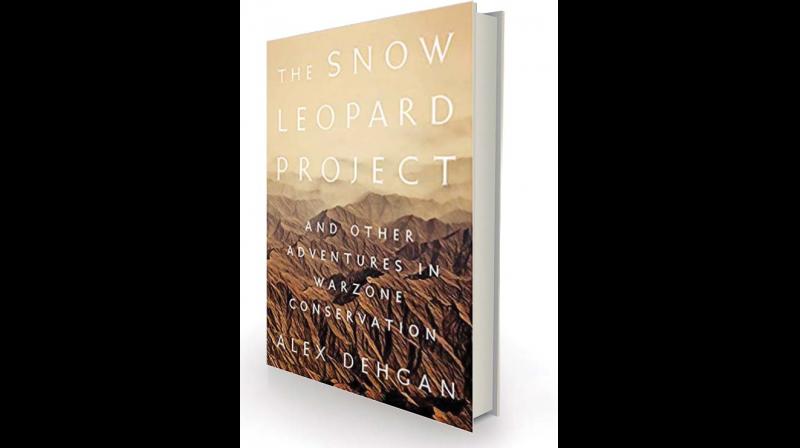In search of the snow leopard in Afghanistan
Not only was the new post more dangerous, even on paper its goals looked to border on madness.

Alex Dehgan is clearly someone with a penchant for hazardous jobs. Even in the first few pages we find him in postwar Baghdad, he had spent the early part of the century searching for Iraqi scientists who had previously worked on weapons’ manufacture for Saddam Hussein. Presumably the life-threatening risks entailed in that role were insufficient, because he then allowed himself to be headhunted for fresh challenges in Afghanistan.
Not only was the new post more dangerous, even on paper its goals looked to border on madness. Dehgan’s brief, scripted by the New York Zoological Society and funded by the United States Agency for International Development, was to design and set up from scratch a conservation infrastructure in one of the most mountainous, least accessible countries on Earth. He was tasked with identifying, gazetting and constructing administrative plans for a network of national parks and wildlife reserves in a state where none had previously existed. All of this would have been difficult in a region blighted merely by poverty, debt and corruption. In one that has known nothing but chaos and conflict for 40 years it was mission impossible. For these reasons the reader is half expecting Dehgan to be a camo-wearing, cigar-chewing action figure, in the manner of Arnold Schwarzenegger, but perhaps with binoculars around his neck. In fact he is of Iranian descent, has a doctorate in the ecology of Madagascan lemurs, speaks Farsi and comes across as mildness personified, is adept at inter-agency diplomacy and has the skills of a top bureaucrat.
In confirmation his text is peppered throughout with a bewildering array of organisational acronyms, of which I counted 37. Those beginning with the letter I alone — the ICS (Iranian Cheetah Society), ISAF (International Security Assistance Force), ISIS (Islamic State in Iraq and Syria) and IUCN (International Union for Conservation of Nature) — along with the ubiquitous IEDs (improvised explosive devices) give you a sense of the book’s capacity for confusion, but also of the rather strange conflation of themes of which it is compounded.
Somehow it never quite delivers on the excitement that one might have anticipated from such a cocktail, nor that one is led to expect from the mysterious allure embedded in the title. Truth to tell we encounter no rare and exotic big cats, aside from the snow leopard skins that the author finds for sale in the bazaars of Kabul. Somehow the wild living organisms that he is sent to monitor and protect feature too little altogether for the book to be genuinely satisfying. Deeper and richer descriptions of Afghan landscapes and wildlife might have served as a counterpoint to all the talk of IEDs and ISAF. Unfortunately we only get half of this picture.
Yet Dehgan does get into the field, most memorably on a prolonged and treacherous excursion to the Wakhan Corridor. This is that 220-kilometre-long finger of the Hindu Kush sticking out from the country’s eastern border towards Tajikistan, China and Pakistan. The valley is also home to Marco Polo sheep, a remarkable ungulate whose spiralling horns have been known to span 1.9 metres and are the longest of any sheep species on Earth.
Unfortunately, while we hear about the creatures, they too remain just out of range of intimate encounter. In fairness they are very shy, because the two communities dwelling in the Wakhan Corridor, the Turkic-speaking Kyrgyz and the ethnically Persian Wakhi have been hunting them for decades. We also learn that after 40 years of continuous chaos and proliferating opium addiction, the inhabitants have the world’s worst infant-mortality rate, more than half of all children dying before the age of five. These are the background social conditions in which the author seeks to establish collective local commitment to protect the sheep’s dwindling numbers. At the end of the book we learn that this unlikeliest of goals is achieved with the creation of a reserve that is greater in size than Yellowstone National Park.

